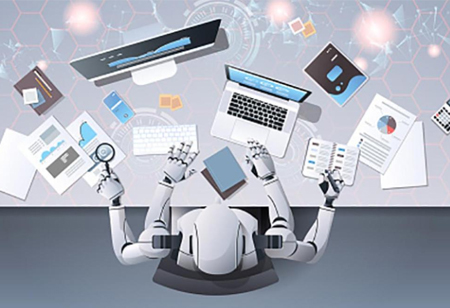THANK YOU FOR SUBSCRIBING
Be first to read the latest tech news, Industry Leader's Insights, and CIO interviews of medium and large enterprises exclusively from CFO Tech Outlook
THANK YOU FOR SUBSCRIBING

By
CFO Tech Outlook | Monday, August 31, 2020
Stay ahead of the industry with exclusive feature stories on the top companies, expert insights and the latest news delivered straight to your inbox. Subscribe today.
Stay on top of the technological advancements in financial management can be a tricky endeavor.
Fremont, CA: Intelligent automation (IA) has caught the attention of finance professionals at large and small enterprises and is being adopted at massive rates. IA is the breadth and complexities of mechanizations, like robotic process automation (RPA) and artificial intelligence (AI), existing on a technology-spectrum defined as IA. Innovation buzzwords like machine learning (ML) and trends such as RPA abound, it is beneficial to slow down before embracing these words and precisely to understand what they mean. As far as financial technology is concerned, it is essential to understand such differences.
Robotic process automation (RPA) is essentially advanced automation that mimics its human counterpart's process and steps. It initially needs programming and guidance to accomplish steps, but once the programming is complete, the robotic component of the process can take over, thereby removing the need for manual processing or intervention.
[vendor_logo_first]Machine learning (ML) has a higher degree of algorithmic, computer-driven automation. RPA operates only within its programming parameters. ML has more freedom and ability to operate because its functions are significantly predicated on adaptive capabilities. These capabilities are derived from their ability to learn and predict outcomes, hence the name "machine learning." Learning through the algorithm, in simple terms, translates to considering all inputs and variables and potential outcomes and identifying potentially problematic areas. Based on the anticipated best outcome, it works to make this best outcome a reality. The greater the number of inputs and data, the more accurate or perceptive the outcome.
Artificial intelligence (AI) mimics human intelligence, while RPA mimics human actions — to put it clearly, AI is the amalgamation of robotic learning. ML is not unlike a precursor to AI in that it established the foundations and training on which AI operates. AI does not need additional information nor data from its existing, pre-trained foundation to learn. Instead, it aggregates and analyzes historical data to make predictive and learned responses from previous operations devoid of human input or interjection. ML to make a more advanced predictive response would still need additional inputs into its programming algorithm. AI makes its inferences based on its machine-learned experiences. Moreover, AI can operate on a broader spectrum by incorporating tools like generative adversarial networks to stress test and improve neural networks by learning from and testing each other.
See also: Top Robotic Process Automation Consulting/Services Companies
I agree We use cookies on this website to enhance your user experience. By clicking any link on this page you are giving your consent for us to set cookies. More info



